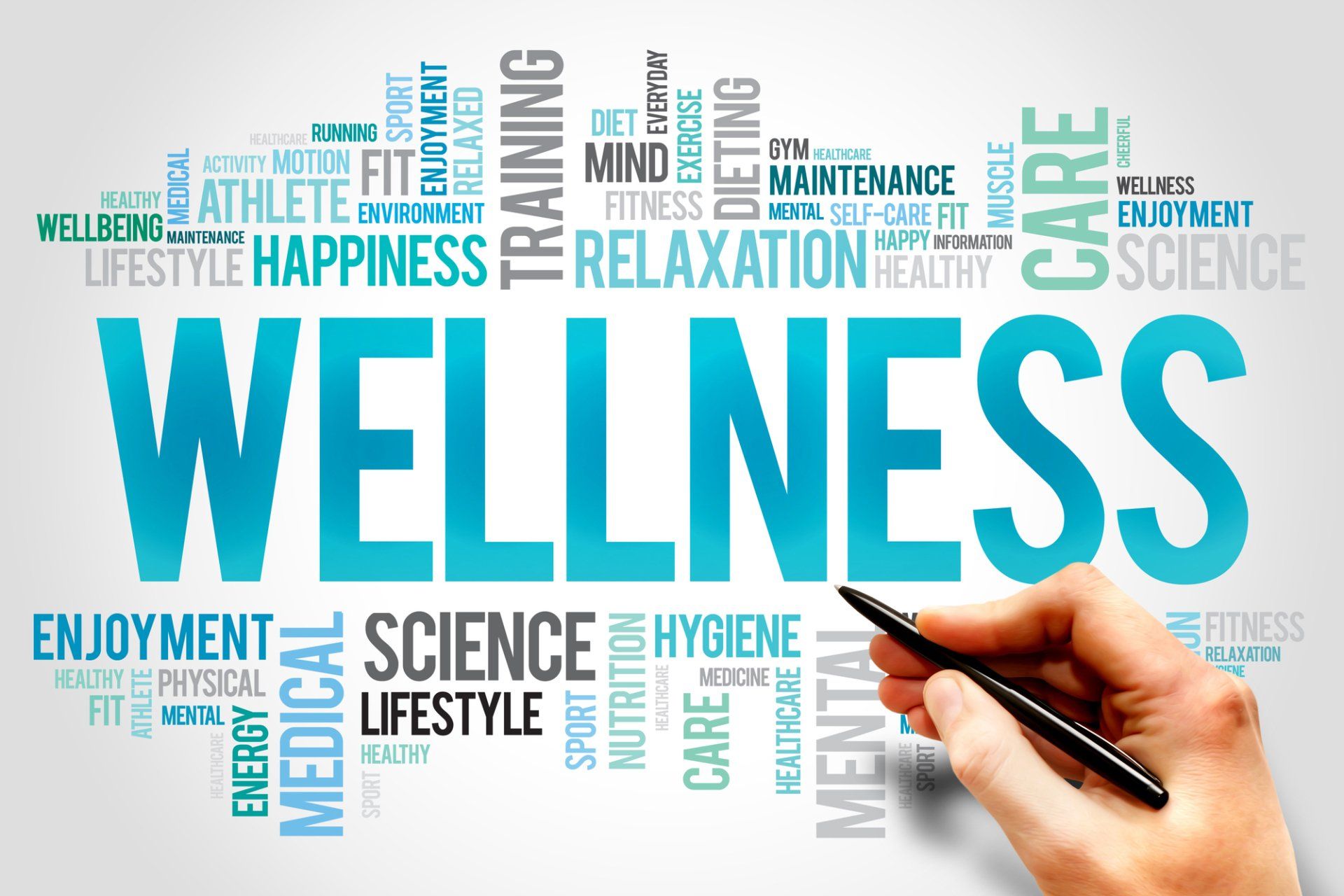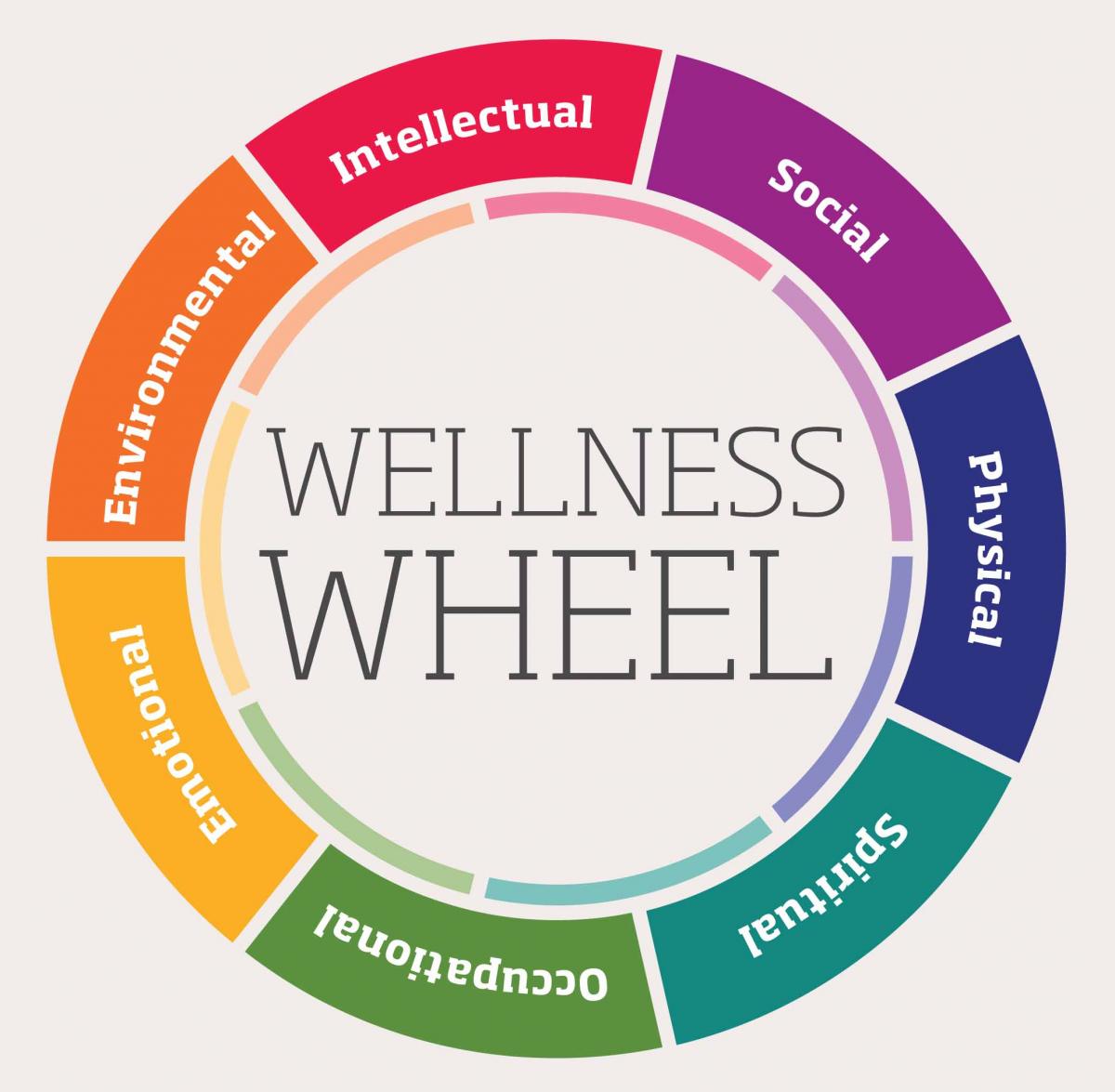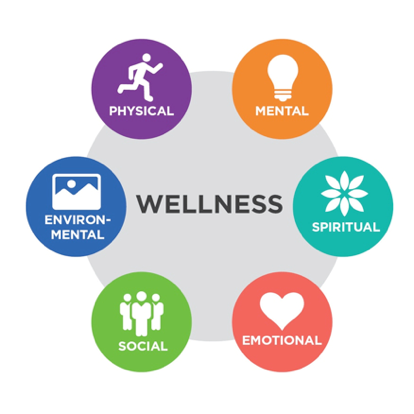Wellness In The Schools - A Path To Brighter Futures
Supporting the well-being of young people in their learning spaces is, in some respects, a topic that has gained a lot of attention. It is about more than just physical health. It also includes how students feel mentally and emotionally. Creating places where children can grow in every way is what this is all about. This helps them to do well in their studies and in life generally.
Information about health can be confusing, as a matter of fact. There is so much advice out there, and it is hard to tell what is true. This is especially true for young people. Schools have a real chance to help clear things up. They can offer clear, reliable information. This helps students make good choices for their bodies and minds. It helps them build strong habits that last a lifetime, too.
Our programs are excited about helping more people to regain and maintain their health through diet and lifestyle change, and to learn how to make better choices about medical care. This idea can really help schools. When schools help students understand how to live a healthy life, they are giving them a very important gift. It is about teaching them how to look at health information. They learn how to tell if something is helpful or not. This skill is quite useful for everyone.
- Iranian Sexism
- Buffstream
- Denzel Washington Training Day
- Lamar Jackson Injury History
- Squirrel Girl Summer Skin Glitch
Table of Contents
- What Does "Wellness in the Schools" Truly Mean?
- Why is Clear Health Information Important for Wellness in the Schools?
- How Can Schools Help Students Make Better Health Choices?
- Getting Students Moving - Fitness and Wellness in the Schools
- Who is Pam Popper and Her Influence on Wellness in the Schools?
- Pam Popper's Background and Philosophy on Wellness in the Schools
- What Makes a Good Wellness Program for Schools?
- The Role of Education and Training for Wellness in the Schools
- Practical Steps for Wellness in the Schools - Food and Products
What Does "Wellness in the Schools" Truly Mean?
When we talk about wellness in the schools, we are looking at something bigger than just eating your vegetables or playing outside. It is about creating an atmosphere where young people feel safe and supported. They can learn about their bodies and minds. It includes their physical health, of course, but also how they feel emotionally and their mental sharpness. It is about teaching them to make good choices for their own well-being. This helps them in their daily life and for their future, too.
Our programs are excited about helping more people to regain and maintain their health through diet and lifestyle change. This idea fits perfectly into a school setting. Schools can help students understand how food affects their energy and mood. They can show them how being active makes them feel better. It is about giving young people the tools to take care of themselves. This might mean offering healthy food options or setting up times for movement during the school day. It is about making health a regular part of how school works, which is pretty important.
This approach also covers learning how to make better choices about medical care. For young people, this could mean teaching them how to think critically about health information they see online or hear from others. It is about giving them the ability to ask good questions. They learn to look for reliable sources. This helps them understand their own health needs. It is about building a foundation of health literacy. This helps them throughout their lives, too. Basically, it is about giving them power over their own health.
- Froot Cheating
- Ymaal
- Ifsa Sotwe Turk
- Timothy Olyphant A Multifaceted Talent In Hollywood
- Qatar Airways Iran Flights
Why is Clear Health Information Important for Wellness in the Schools?
Information about health can be confusing, and that is a real issue for everyone, especially young people. They are growing up in a world where there is a lot of advice everywhere. Some of it is good, some of it is not so good. The best way to determine whether an article or claim is true or false is to analyze it. Schools can play a very important part in teaching this skill. They can help students learn how to look at health claims with a thoughtful eye. This helps them sort out what is real and what is not.
When students learn to think critically about health information, they are better able to protect their own wellness in the schools and beyond. This means teaching them to look for where information comes from. They learn to question things that sound too good to be true. It is about giving them the mental tools to be smart consumers of health advice. This skill is quite valuable. It helps them avoid bad choices that could hurt their health. It also helps them find good information that supports their well-being.
This kind of education helps build a generation of young people who are not easily swayed by misleading health messages. It helps them feel more sure about their own health choices. It is about empowering them to be their own health advocates. This is a vital part of overall wellness in the schools. It helps create a culture where everyone is encouraged to seek out good, solid information. This leads to healthier habits and better health outcomes for everyone, too.
How Can Schools Help Students Make Better Health Choices?
Schools are a natural place to help young people make better choices about their health. Our programs are excited about helping more people to regain and maintain their health through diet and lifestyle change. This means schools can look at what they offer in the cafeteria. They can also look at how much physical activity students get each day. It is about making healthy choices the easy choices. This helps students build habits that stick with them for a long time. It is about teaching them that what they eat and how they move really does matter.
For example, schools can offer a range of healthy food options. They can also teach about balanced meals. This helps students understand why certain foods are good for them. They can also make sure there is enough time for play and movement. This helps students get the physical activity they need. It is about creating an environment where wellness in the schools is just part of the everyday routine. This helps young people feel good and do their best learning, too.
It also means teaching students how to make better choices about medical care. This does not mean schools become doctors. Instead, it means teaching students to be thoughtful about health decisions. They learn to ask questions. They learn to look for reliable information. This helps them understand their own bodies. It helps them feel more in control of their health. This kind of learning helps them grow into adults who can take good care of themselves, which is very important.
Getting Students Moving - Fitness and Wellness in the Schools
Fitness at wellness forum health offers both individual sessions and group classes at a private gym. This idea of varied physical activity can be really good for wellness in the schools. It is not just about gym class. It is about offering different ways for students to move their bodies. Some students might like team sports. Others might prefer dancing or yoga. It is about finding what works for each young person. This helps them enjoy being active. It helps them build a lifelong love for movement, too.
Schools can create spaces and times for different kinds of physical activity. This might mean having a variety of sports clubs. It could mean offering quiet spaces for stretching or mindfulness. It is about recognizing that everyone is different. Everyone has different ways they like to be active. When schools offer many choices, more students are likely to find something they enjoy. This helps them get the physical activity they need for their health and well-being. It helps them feel good about themselves, which is very important.
Regular physical activity is a big part of feeling well. It helps with energy levels. It helps with mood. It helps with focus in class, too. When students are active, they tend to learn better. They also tend to feel better about themselves. So, making sure there are plenty of chances for movement is a key part of promoting wellness in the schools. It is about helping students build strong bodies and minds. This helps them succeed in all parts of their lives, you know.
Who is Pam Popper and Her Influence on Wellness in the Schools?
Pam Popper is an internationally recognized expert on nutrition, medicine, and health. She is also the founder and executive director of Wellness Forum Health. Her work offers a lot of ideas for how schools can approach health and well-being. She has spent a lot of time looking into what really helps people stay healthy. Her ideas are about empowering people to make good choices for themselves. This is a very useful approach for young people in schools. It helps them learn how to take charge of their own health.
Pam Popper's Background and Philosophy on Wellness in the Schools
Pam Popper's background is quite varied and deep. She is a licensed professional counselor in private practice. She is also a certified health educator. And she is a faculty member for the Wellness Forum Institute for Health Studies. This mix of experiences gives her a broad view of health. Her philosophy centers on giving people clear, research-backed information. This helps them make informed choices about their diet, lifestyle, and medical care. This kind of clear, evidence-based teaching is very important for wellness in the schools.
Her approach suggests that young people need to learn how to think for themselves about health matters. They need to understand the facts. They need to be able to tell the difference between good advice and bad advice. This is especially true with so much confusing information out there. Her work emphasizes that true health comes from understanding how our bodies work. It comes from making daily choices that support well-being. This philosophy can really help shape how schools teach about health. It can help them create programs that truly make a difference for students.
| Role/Expertise | Description |
|---|---|
| Internationally Recognized Expert | Nutrition, Medicine, Health |
| Founder & Executive Director | Wellness Forum Health |
| Licensed Professional Counselor | In private practice |
| Certified Health Educator | Provides health education |
| Faculty Member | Wellness Forum Institute for Health Studies |
| Office Location | 510 E. Wilson Bridge Road, Suite G, Worthington, Ohio 43085 |
What Makes a Good Wellness Program for Schools?
What makes these courses different? Each course represents hundreds of hours of research. This detail from the source text is very important for wellness in the schools. A good wellness program for young people should not just be based on popular trends. It needs to be built on solid, reliable information. This means looking at what the best science says about health. It means making sure the information taught is accurate and truly helpful. This helps schools give students the best possible guidance for their health.
A strong wellness program also looks at the whole young person. It does not just focus on one part of health. It considers physical activity, what students eat, and how they manage their feelings. It also considers their mental well-being. It is about creating a balanced approach that supports every aspect of a young person's health. This kind of program helps students develop a full picture of what it means to be well. This helps them make good choices in all areas of their lives, which is very important.
Such programs also teach skills that students can use throughout their lives. This includes critical thinking about health claims. It includes learning how to set health goals. It also includes how to deal with stress. These are not just facts to memorize. These are practical skills that help young people live healthier, happier lives. So, a good wellness program for schools is about giving students the knowledge and the tools they need to take care of themselves. It is about building a foundation for lifelong health, you know.
The Role of Education and Training for Wellness in the Schools
The Wellness Forum Institute for Health Studies is the first school in the U.S. to offer certificates and diplomas based on its philosophy. This highlights the importance of specialized education and training for those involved in wellness in the schools. It is not enough to just want students to be healthy. The people teaching and guiding them need to have a deep understanding of health principles. They need to know how to share this information in a way that young people can understand and use.
This means investing in professional development for teachers and school staff. It means giving them the chance to learn about nutrition, physical activity, and mental well-being. It helps them feel more confident in talking about these topics with students. It also helps them create a school environment that truly supports health. When staff are well-informed, they can better serve as role models. They can also better guide students toward healthy habits. This creates a stronger culture of wellness throughout the school community, too.
Having dedicated training programs, like those offered by the Wellness Forum Institute, shows a serious commitment to health education. It helps ensure that the information being shared is consistent and based on good science. This kind of structured learning helps prepare people to lead effective wellness initiatives. It helps them make a real difference in the lives of young people. So, the right education and training are key for truly effective wellness in the schools.
Practical Steps for Wellness in the Schools - Food and Products
Look through our selection of foods and products, like lotions and vegan food options, that will help improve your health and well-being. This part of the source text gives us practical ideas for wellness in the schools. It is not just about what is taught in class. It is also about the everyday things students interact with. This includes the food they eat at school. It also includes the products they might use or see around them. Making healthy options available and visible is a very practical step.
For example, schools can look at their cafeteria menus. They can make sure there are plenty of fresh fruits and vegetables. They can also offer plant-based options. This helps students learn to try new foods. It helps them understand that healthy eating can be tasty, too. It is about making good food choices easy and appealing. This directly supports physical health and energy levels. It helps students stay focused and ready to learn, which is very important for their success.
Beyond food, thinking about products like lotions can also be part of wellness in the schools. This might mean teaching students about ingredients. It might mean encouraging awareness of what they put on their bodies. It is about helping them make informed choices about personal care items. This broadens the idea of wellness beyond just food and exercise. It helps students think about their health in a more complete way. So, practical steps like these can make a big difference in promoting overall well-being in the school environment, you know.
This article explored the idea of wellness in the schools. It looked at how clear health information is important. It also looked at how schools can help students make better health choices. We considered the role of physical activity. We also looked at the influence of experts like Pam Popper. The article touched on what makes a good wellness program. It also discussed the importance of education and training for staff. Finally, it covered practical steps related to food and products in schools.



Detail Author:
- Name : Chyna Abernathy III
- Username : whitney.jerde
- Email : xjacobson@renner.net
- Birthdate : 2005-03-17
- Address : 4896 Kimberly Plains Skileston, PA 17326
- Phone : (740) 318-7552
- Company : Erdman LLC
- Job : Reporters OR Correspondent
- Bio : Hic maxime quis mollitia eveniet et. Modi temporibus ea quas rerum vitae et eligendi.
Socials
linkedin:
- url : https://linkedin.com/in/bruena
- username : bruena
- bio : Est vitae est quibusdam non.
- followers : 4994
- following : 1532
facebook:
- url : https://facebook.com/abruen
- username : abruen
- bio : Sed libero nihil voluptatem repellendus quo dolorem voluptas.
- followers : 3620
- following : 501
instagram:
- url : https://instagram.com/bruen1977
- username : bruen1977
- bio : Iste libero ratione voluptates at commodi similique. Harum dolor sit nostrum natus rerum quasi.
- followers : 5161
- following : 2285
twitter:
- url : https://twitter.com/bruena
- username : bruena
- bio : Distinctio magni est ex. Mollitia sed et necessitatibus illo sequi qui. Et possimus sed et optio voluptatem. Labore nesciunt ducimus omnis accusamus rem.
- followers : 3468
- following : 977
tiktok:
- url : https://tiktok.com/@abner_bruen
- username : abner_bruen
- bio : Reiciendis necessitatibus quo minima quis. Aut quas reiciendis excepturi.
- followers : 799
- following : 675